Cursive Alphabet: Letter W Worksheet and Practice Methods
The cursive W looks like two small v shapes written in one smooth motion. It’s a wide letter that needs equal spacing and consistent curves to look balanced. The lowercase form flows easily into the next letter, while the uppercase W often stands alone but can connect when needed.
This guide shows you how to write cursive W step by step, connect it smoothly with other letters, and practice with proven methods. A printable worksheet is also included so you can begin writing right away. Let’s get started with the worksheet.
Download Free Printable Cursive W Worksheet
Print the sheet and start by tracing the strokes slowly. Focus on the spacing between the curves. With regular practice, you’ll build a smoother, more confident cursive W.
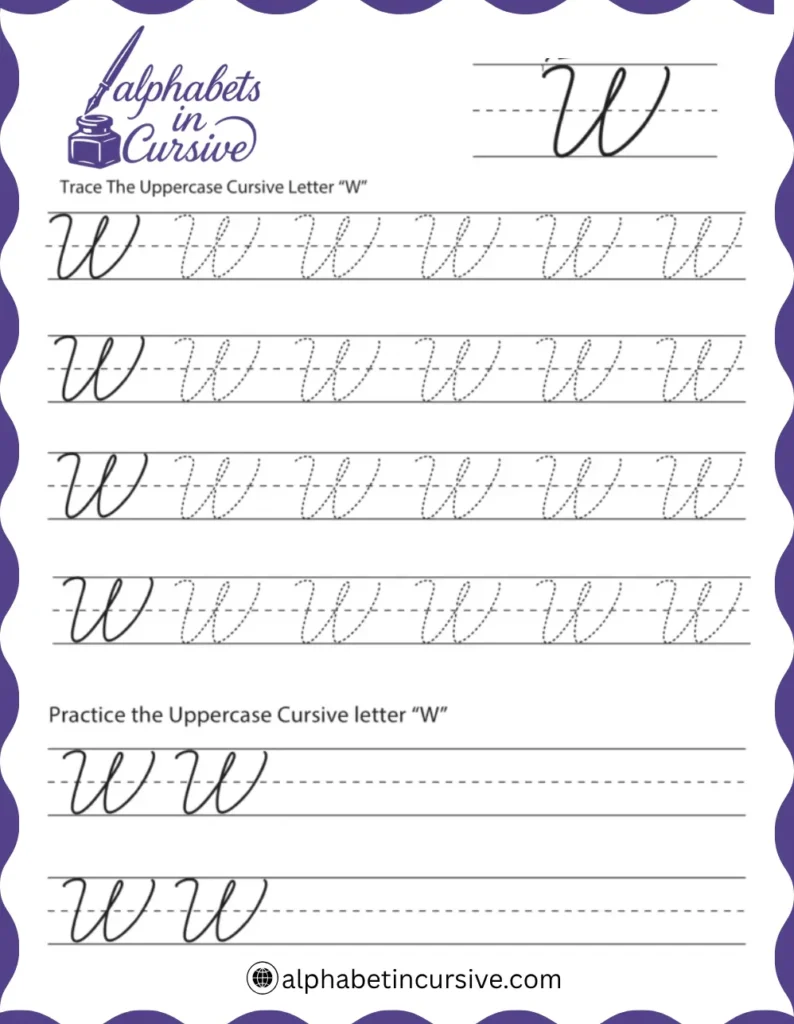
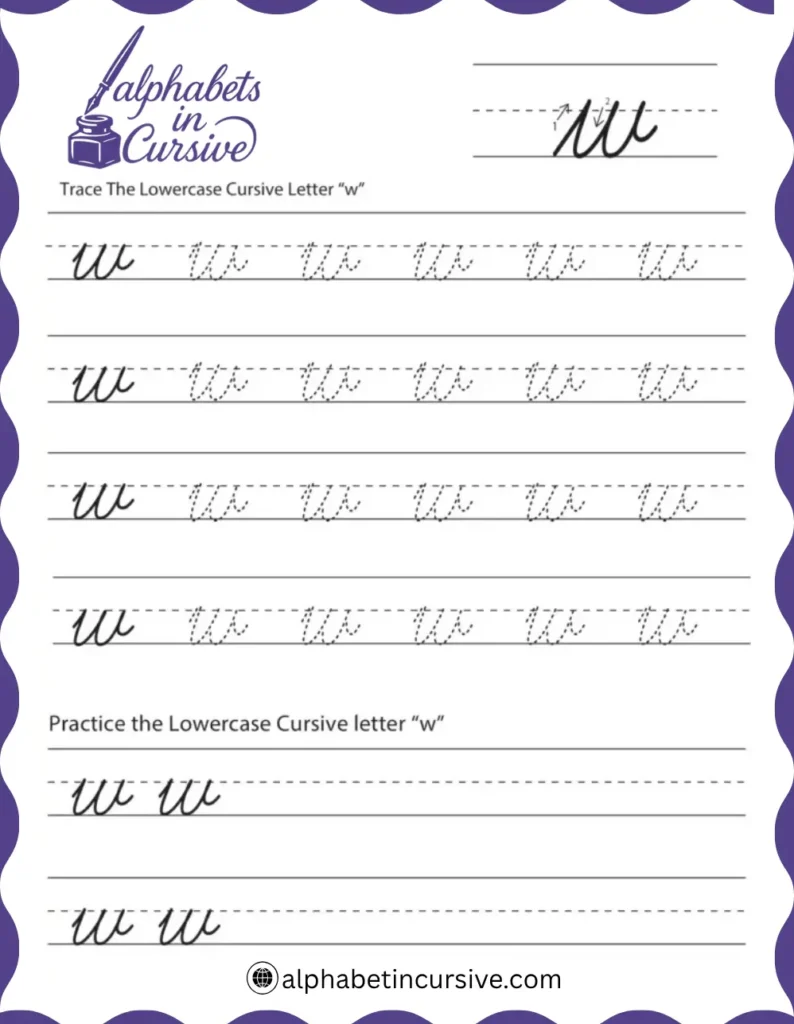
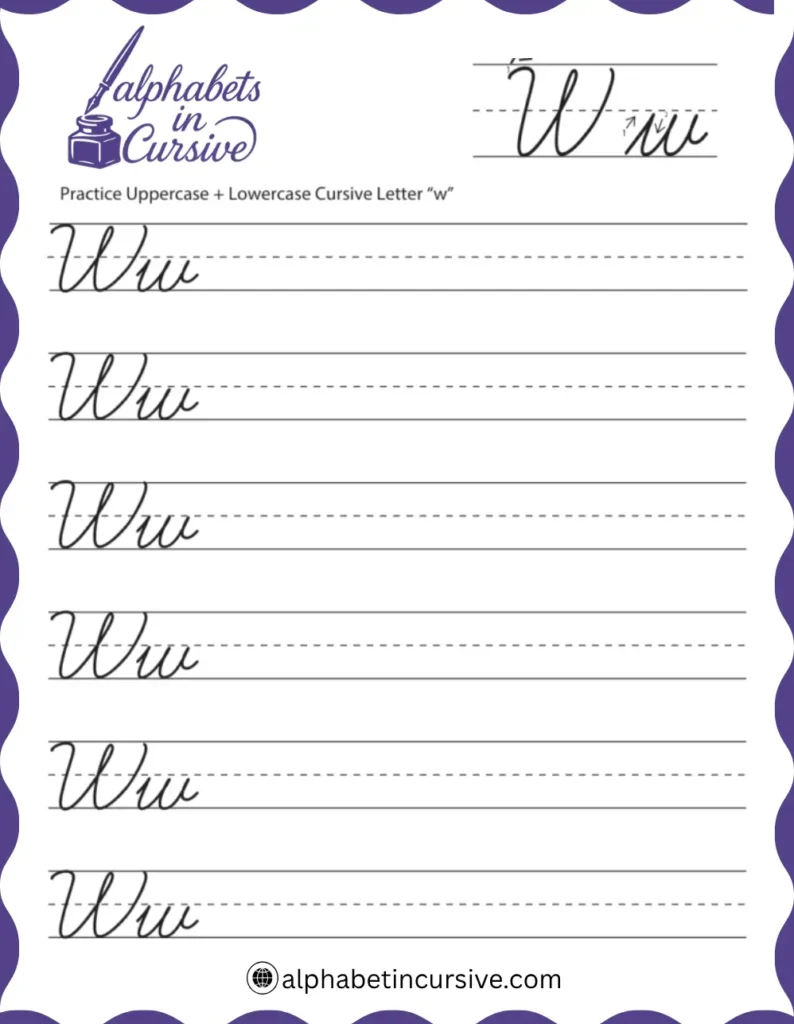
How to Write the Cursive Letter W
Cursive W is written as two smooth curves joined together. It has no loops or sharp angles, but still needs clear spacing to look neat and readable.
How to Write Lowercase Cursive W
Think of it as writing two lowercase cursive v shapes in one motion.

- Start at the bottom line
- Make a slanted upward stroke to the midline
- Curve it down to the baseline — this is the first downstroke
- Without lifting your pencil, make another upward stroke to the midline
- Bring it down again to the baseline for the second downstroke
- Finish with a small upward curve for connection
How to Write Uppercase Cursive W
The uppercase W has a wider shape, often used in names. Focus on keeping the strokes balanced and smooth.

- Begin at the top line
- Draw a small upward stroke, then a downward slant to the bottom line
- Curve up and right, touching the midline
- Curve the stroke down to the left and loop back up just below the midline
- Add a diagonal downstroke, then finish with a small exit curve if connecting
How to Connect Cursive W to Other Letters
Lowercase w connects easily to most letters thanks to its upward exit stroke. Uppercase W is used mostly at the beginning of cursive words and often stands alone, but it can connect in smoother writing styles.
How to Connect Lowercase Cursive W
Keep the upward curve short and steady so your next letter sits close without crowding.
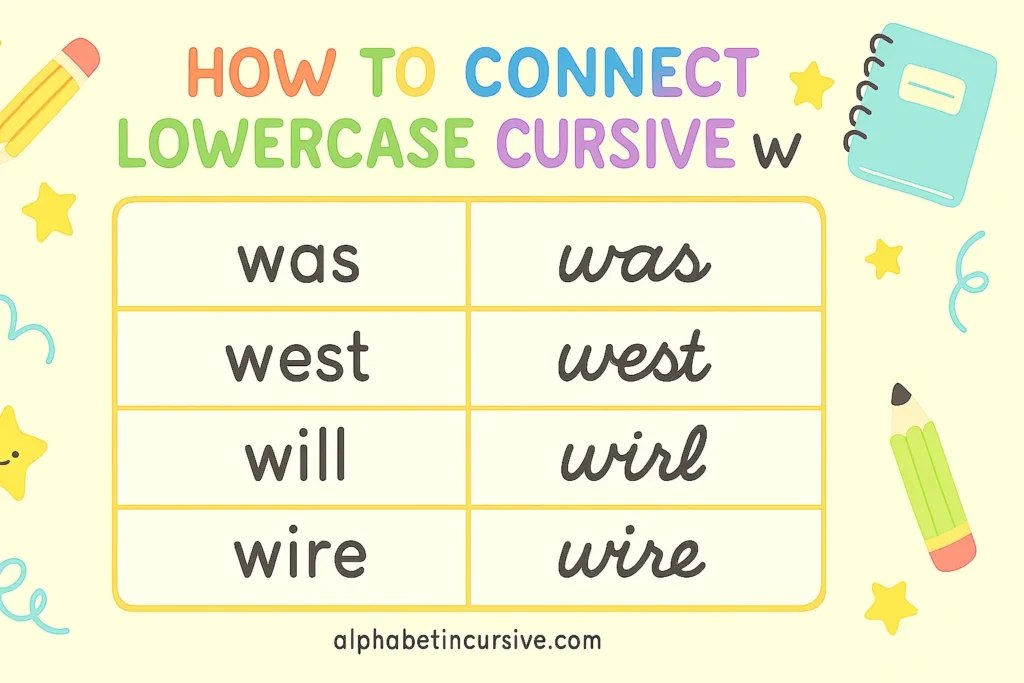
- End the second downstroke with a small upward curve
- This curve rises just above the baseline
- It flows naturally into letters like a, e, i, o, r, and u
Examples:
was, west, will, wire, want
How to Connect Uppercase Cursive W
If the join feels messy or too tight, it’s okay to leave a small gap. Readability matters more than perfect flow.
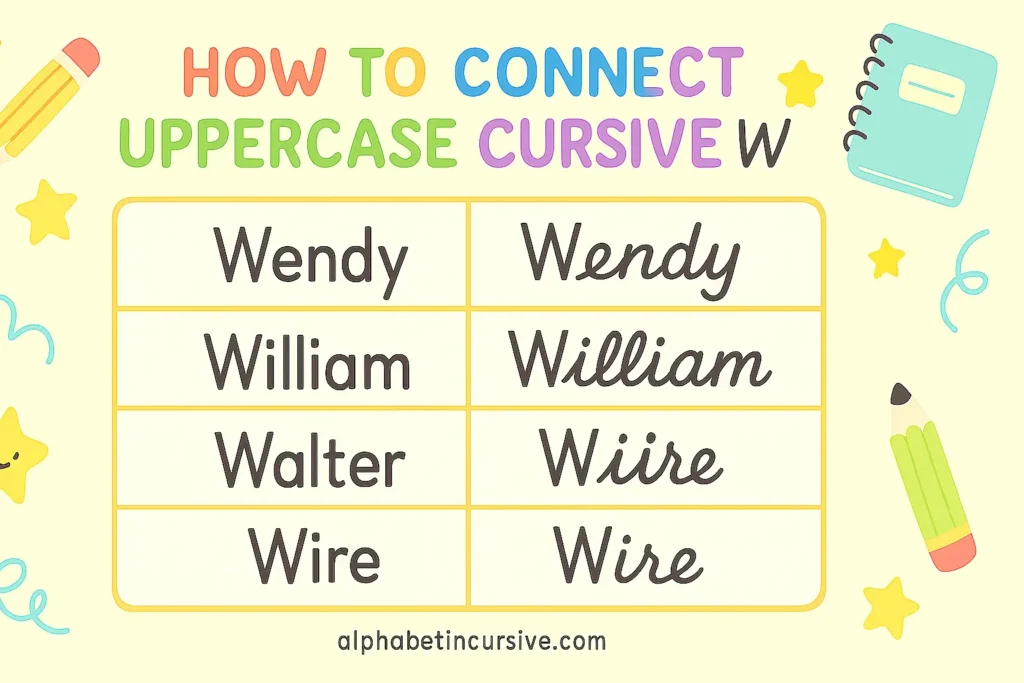
- Most writers lift their pencil after the uppercase W
- If connecting, the final stroke should curve gently right toward the midline
- This works best when joining to lowercase vowels or soft consonants
Examples:
Wendy, William, Walter
Practice Methods for Writing Cursive W
Practicing W helps develop rhythm and spacing control. The key is even curves and steady strokes. Use these methods to build skill and confidence.
Start with tracing models
Follow the arrows and stroke order on the worksheet. Repeat both uppercase and lowercase forms slowly.
Use dotted outlines
Write directly over dotted W’s to guide your motion. Focus on keeping the width balanced.
Practice letter joins
Write pairs like wa, we, wi, wo, wr. This helps with smooth transitions to the next letter.
Write full words
Try short words: was, will, west, win. Then practice names like Walter or Wendy using lined paper.
Frequently Asked Questions
Why does my cursive W look too wide?
This usually happens when the strokes are spaced too far apart. Focus on keeping both curves the same size and close together.
What’s the most common mistake when writing cursive W?
Uneven height between the two curves. Both halves of the W should rise to the same level.
Should I practice W with other letters?
Yes. Pair it with vowels like wa, we, wi and common words like was or well. This helps with flow and rhythm.
How is cursive W different from print?
Cursive W is more fluid, written in one motion without lifting the pencil. The shape is similar but rounder and joined.
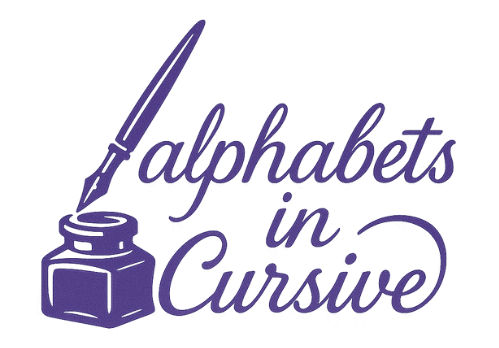
This worksheet for the cursive letter W is really helpful.